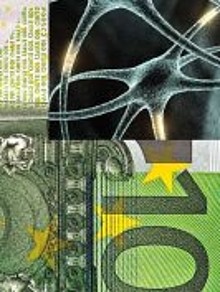The History of Neuromarketing and Neuroeconomics

The birth of neuromarketing, the application of neuroscience methods and insights to marketing problems, can be placed around 2002. A first definition and an account on the possibilities and limitations of neuromarketing was given by Smidts (2002). This publication is the first academic piece on the new field of neuromarketing, not only defining the field but also discussing its prospects.
A detailed historical perspective on how neuromarketing developed in its early years is provided by Levallois, Smidts and Wouters (2020). Importantly, neuromarketing designates both a developing industry and an academic research field. Our study documents the emergence of neuromarketing through the first mention of the term in traditional and new media until the stabilization of the field in 2008. It provides a comprehensive account of the viewpoints of its main players, both in practice and in academia, and pinpoints the role of highly influential publications such as the Coke vs. Pepsi study (McClure et al., 2004). Our main interest was to establish whether neuromarketing developed separately as an academic field and as an industry (with knowledge transfer from the former to the latter), or whether it was an act of co-creation. Based on a corpus gathered from a systematic search on the Web, we trace the multiple forms of engagement between academic and commercial communities. We find that neuromarketing developed an identity through a set of practices and a series of debates which involved intertwined communities of academic researchers and practitioners.
A perspective on the potential substantive contributions of the developing field of consumer neuroscience to marketing is provided by a sequence of papers published in Marketing Letters. These papers are based on workshops held at the Triennial Invitational Choice Symposium, bringing together active researchers in the decision neuroscience field (Shiv et al., 2005, Dubé et al., 2008, Yoon et al., 2012, and Smidts et al., 2014).
Specifically, in Smidts et al. (2014), we sketch the development of the consumer neuroscience discipline and compare it to that of the adjacent field of neuroeconomics. We note three main frontiers for further progress. First, consumer neuroscience is expected to broaden its boundaries to include genetics and molecular neuroscience, each of which will provide important new insights into individual differences in decision making. Second, recent advances in computational methods will improve the accuracy and out-of-sample generalizability of predicting decisions from brain activity. Third, sophisticated meta-analyses will help consumer neuroscientists to synthesize the growing body of knowledge, providing evidence for consistency and specificity of brain activations and their reliability as measurements of consumer behavior.
An early analysis of how the broader field of neuroeconomics developed is provided in Levallois et al. (2012) “Translating upwards” published in Nature Reviews Neuroscience. It offers the first empirical study of neuroeconomics as an interdisciplinary community of scientists, demonstrating the progress and limitations in the integration of different scientific milieus into one new knowledge domain.
The historical research on neuroeconomics and neuromarketing was carried out by Clement Levallois and funded in part by a €1.2 million Open Research Area (ORA) grant for NESSHI:The Neuro-Turn in European Social Sciences and Humanities: Impact of neurosciences in economics, marketing and philosophy, funded by four European research agencies (NWO, ANR, DFG, ESRC). The project involved collaboration with partners from Oxford University, Paris II – Sorbonne University and the University of Mainz. Previous research on this theme was linked to the research programme of the Erasmus Virtual Knowledge Studio.
References
Casado‐Aranda, L.‐A., Sánchez‐Fernández, J., Bigne, E., & Smidts, A. (2023). The application of neuromarketing tools in communication research: A comprehensive review of trends. Psychology & Marketing, 40, 1737-1756. https://doi.org/10.1002/mar.21832
Levallois C., Smidts A. & Wouters, P.F. (2019). The emergence of neuromarketing investigated through online public communications (2002-2008). Business History. doi: 10.1080/00076791.2019.1579194
Smidts, A., Hsu, M, Sanfey, A.G., Boksem, M.A.S., Ebstein, R.B., Huettel, S.A., Kable, J.W., Karmarkar, U.M., Kitayama, S., Liberzon, I., Knutson, B., Lohrenz, T., Stallen, M. & Yoon, C (2014). Advancing Consumer Neuroscience. Marketing Letters, 25(3), 257-267
Levallois, C., Clithero, J.A., Wouters, P.F., Smidts, A. & Huettel, S.A. (2012). Translating upwards: Linking the neural and social sciences via neuroeconomics. Nature Reviews Neuroscience, 13(11), 789-797.
Yoon, C, Ganzalez, R., Bechara, A., Berns, G.S., Dagher, A.A., Dube, L., Huettel, S.A., Kable, J.W., Liberzon, I., Plassmann, H., Smidts, A. & Spence, C. (2012). Decision neuroscience and consumer decision making. Marketing Letters, 23, 473-485. doi: 10.1007/s11002-012-9188-z
Dubé, L., Bechara, A., Böckenholt, U., Ansari, A., Dagher, A., Daniel, M., DeSarbo, W.S., Fellows, L.K., Hammond, R.A., Huang, T.T.K., Huettel, S., Kestens, Y., Knäuper, B., Kooreman, P., Moore, D.S. & Smidts, A. (2008). Towards a brain-to-society systems model of individual choice. Marketing Letters, 19(3/4), 323-336.
Shiv, B., Bechara, A., Levin, I., Alba, J.W., Bettman, J., Dube, L., Isen, A., Mellers, B., Smidts, A., Grant, S.J., & McGraw, P. (2005). Decision Neuroscience. Marketing Letters, 16(3/4), 375-386.
Smidts, A. (2002). Kijken in het brein: Over de mogelijkheden van neuromarketing. Inaugural Address Erasmus University, ERIM EIA-12-MKT http://hdl.handle.net/1765/308

